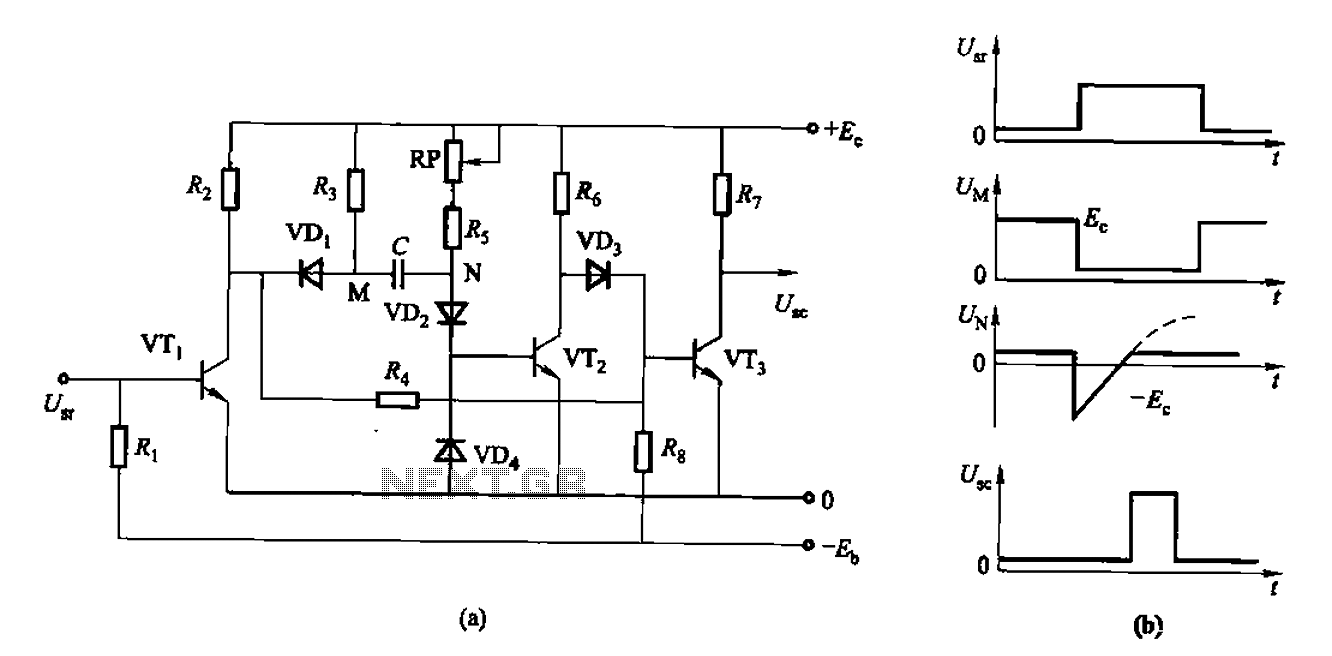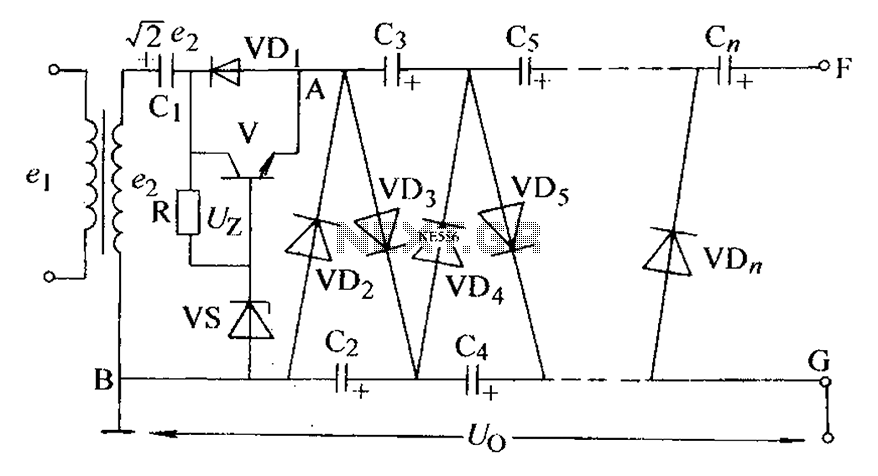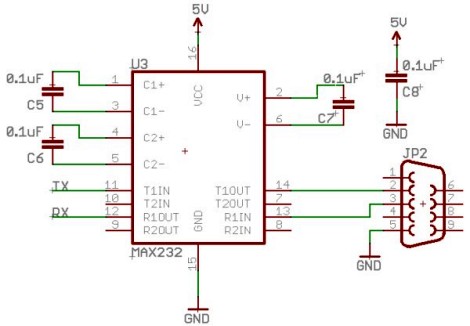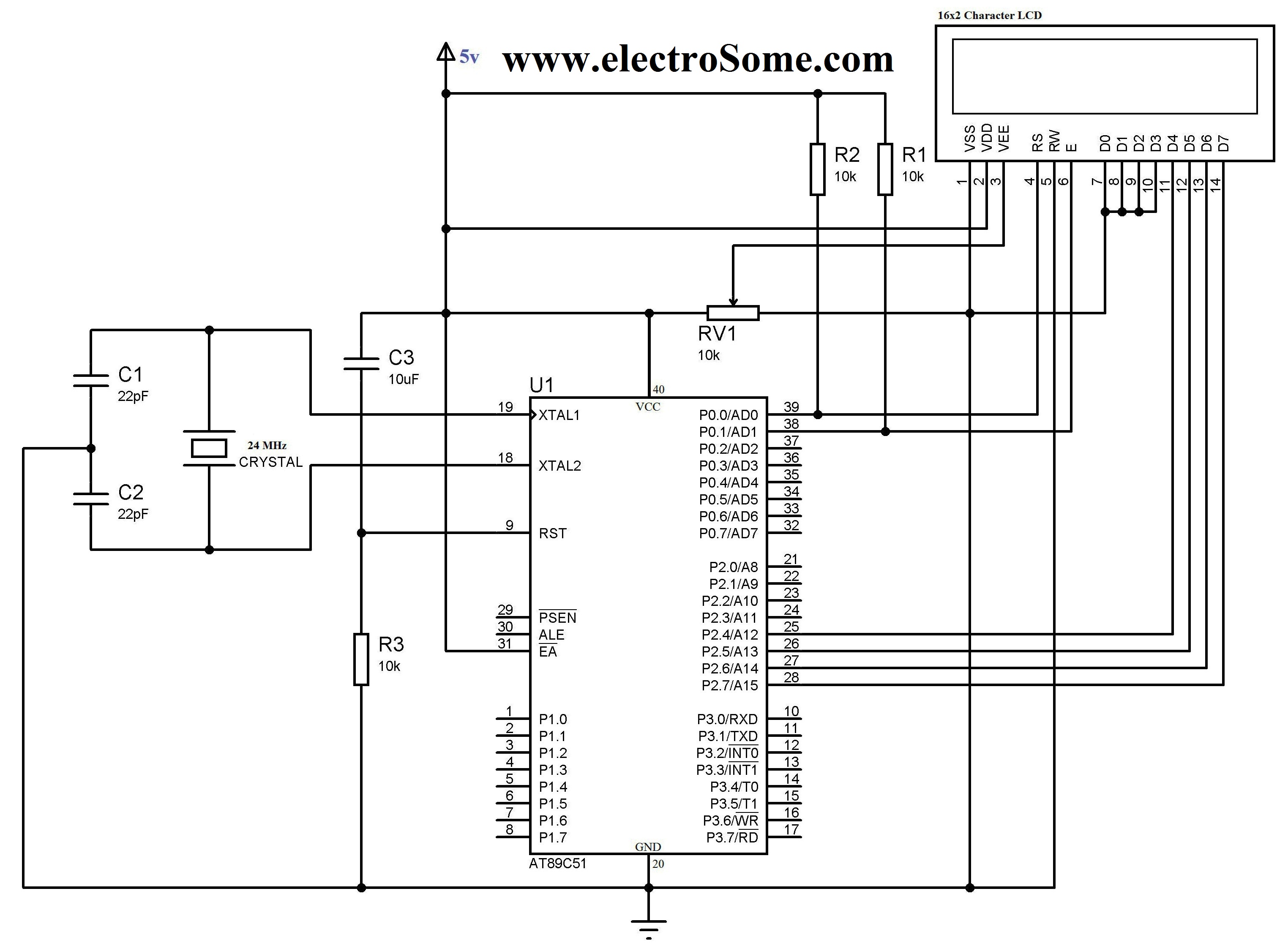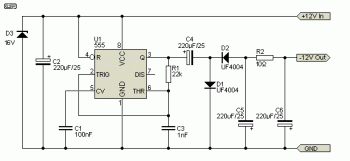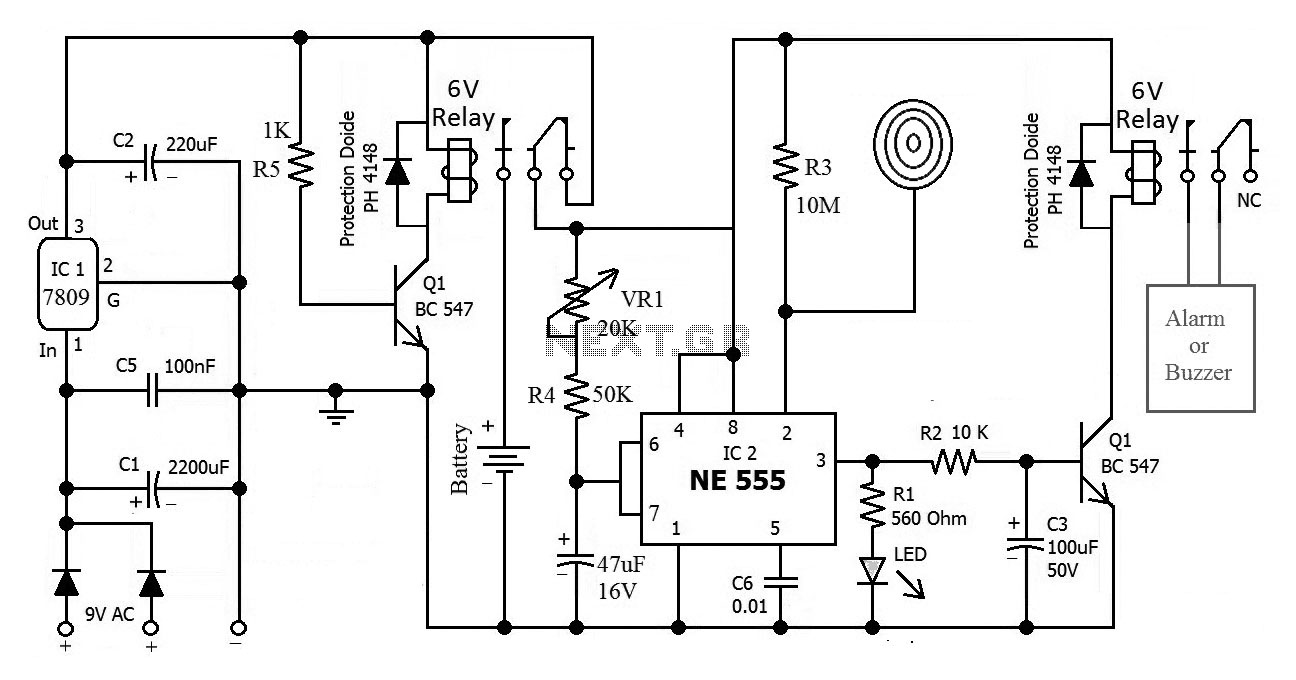
Software delay routine in 8051 for generating different time delays
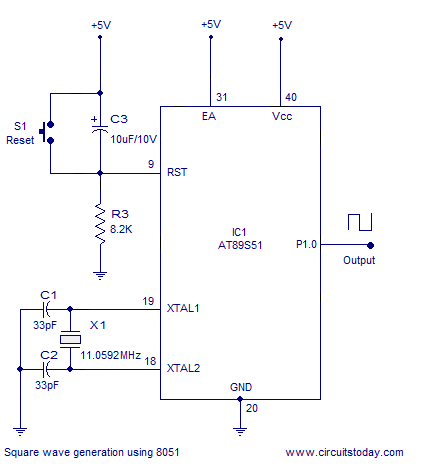
A software delay routine in the 8051 microcontroller is utilized to generate various time delays. This project features a sine wave generator circuit that employs a software delay within the 8051 architecture. The AT89C51 microcontroller serves as the core component of this implementation.
The sine wave generator circuit using the 8051 microcontroller is designed to produce a continuous sine wave output, which can be used in various applications such as signal processing, audio synthesis, and waveform generation. The AT89C51 microcontroller is an 8-bit microcontroller that is part of the 8051 family, known for its versatility and ease of programming.
To implement the sine wave generator, the software delay routine is critical. This routine is established using timer interrupts or loop-based delays that allow precise control over the timing of the output signal. The sine wave is typically generated by calculating the sine values at discrete intervals and outputting these values through a Digital-to-Analog Converter (DAC) or by using Pulse Width Modulation (PWM) techniques.
The circuit may include the following components:
1. **Microcontroller (AT89C51)**: Acts as the primary control unit, executing the software delay routine and generating the sine wave values.
2. **Digital-to-Analog Converter (DAC)**: Converts the digital sine wave values produced by the microcontroller into an analog signal.
3. **Resistors and Capacitors**: Used in conjunction with the DAC to filter the output signal and smooth out the waveform.
4. **Power Supply**: Provides the necessary voltage and current to the microcontroller and peripheral components.
The software delay routine can be implemented using various methods, such as:
- **Busy Wait Loop**: A simple method where the microcontroller remains in a loop for a specified number of cycles, consuming CPU time and resources.
- **Timer Interrupts**: More efficient, where the microcontroller uses built-in timers to generate precise delays without occupying the CPU continuously.
This design allows for flexibility in adjusting the frequency and amplitude of the sine wave by modifying the software delay parameters and the values sent to the DAC. The final output can be monitored using an oscilloscope or similar equipment to ensure the waveform meets the required specifications.Software delay routine in 8051 for generating different time delays. Sine wave generator circuit using software delay in 8051. AT89C51 is the microcontroller used in this project.. 🔗 External reference
The sine wave generator circuit using the 8051 microcontroller is designed to produce a continuous sine wave output, which can be used in various applications such as signal processing, audio synthesis, and waveform generation. The AT89C51 microcontroller is an 8-bit microcontroller that is part of the 8051 family, known for its versatility and ease of programming.
To implement the sine wave generator, the software delay routine is critical. This routine is established using timer interrupts or loop-based delays that allow precise control over the timing of the output signal. The sine wave is typically generated by calculating the sine values at discrete intervals and outputting these values through a Digital-to-Analog Converter (DAC) or by using Pulse Width Modulation (PWM) techniques.
The circuit may include the following components:
1. **Microcontroller (AT89C51)**: Acts as the primary control unit, executing the software delay routine and generating the sine wave values.
2. **Digital-to-Analog Converter (DAC)**: Converts the digital sine wave values produced by the microcontroller into an analog signal.
3. **Resistors and Capacitors**: Used in conjunction with the DAC to filter the output signal and smooth out the waveform.
4. **Power Supply**: Provides the necessary voltage and current to the microcontroller and peripheral components.
The software delay routine can be implemented using various methods, such as:
- **Busy Wait Loop**: A simple method where the microcontroller remains in a loop for a specified number of cycles, consuming CPU time and resources.
- **Timer Interrupts**: More efficient, where the microcontroller uses built-in timers to generate precise delays without occupying the CPU continuously.
This design allows for flexibility in adjusting the frequency and amplitude of the sine wave by modifying the software delay parameters and the values sent to the DAC. The final output can be monitored using an oscilloscope or similar equipment to ensure the waveform meets the required specifications.Software delay routine in 8051 for generating different time delays. Sine wave generator circuit using software delay in 8051. AT89C51 is the microcontroller used in this project.. 🔗 External reference
Warning: include(partials/cookie-banner.php): Failed to open stream: Permission denied in /var/www/html/nextgr/view-circuit.php on line 713
Warning: include(): Failed opening 'partials/cookie-banner.php' for inclusion (include_path='.:/usr/share/php') in /var/www/html/nextgr/view-circuit.php on line 713
